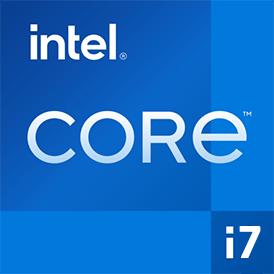 Geekbench 3, 64bit (Multi-Core)
Geekbench 3, 64bit (Multi-Core)
|
|
Intel Core i7-4790S
4C 8T @ 3.2 GHz
|
13905
|
|
|
Intel Core i7-4790T
4C 8T @ 2.7 GHz
|
12713
|
 Estimated results for PassMark CPU Mark
Estimated results for PassMark CPU Mark
|
|
Intel Core i7-4790S
4C 8T @ 3.2 GHz
|
6991
|
|
|
Intel Core i7-4790T
4C 8T @ 2.7 GHz
|
6335
|
 Geekbench 3, 64bit (Single-Core)
Geekbench 3, 64bit (Single-Core)
|
|
Intel Core i7-4790S
4C 8T @ 3.2 GHz
|
3911
|
|
|
Intel Core i7-4790T
4C 8T @ 2.7 GHz
|
3813
|
 Geekbench 6 (Multi-Core)
Geekbench 6 (Multi-Core)
|
|
Intel Core i7-4790S
4C 8T @ 3.2 GHz
|
3714
|
|
|
Intel Core i7-4790T
4C 8T @ 2.7 GHz
|
3401
|
 Geekbench 5, 64bit (Multi-Core)
Geekbench 5, 64bit (Multi-Core)
|
|
Intel Core i7-4790S
4C 8T @ 3.2 GHz
|
3269
|
|
|
Intel Core i7-4790T
4C 8T @ 2.7 GHz
|
3148
|
 Geekbench 6 (Single-Core)
Geekbench 6 (Single-Core)
|
|
Intel Core i7-4790S
4C 8T @ 3.2 GHz
|
1205
|
|
|
Intel Core i7-4790T
4C 8T @ 2.7 GHz
|
1186
|
 Cinebench R23 (Single-Core)
Cinebench R23 (Single-Core)
|
|
Intel Core i7-4790S
4C 8T @ 3.2 GHz
|
974
|
|
|
Intel Core i7-4790T
4C 8T @ 2.7 GHz
|
955
|
 Geekbench 5, 64bit (Single-Core)
Geekbench 5, 64bit (Single-Core)
|
|
Intel Core i7-4790S
4C 8T @ 3.2 GHz
|
945
|
|
|
Intel Core i7-4790T
4C 8T @ 2.7 GHz
|
912
|
 Cinebench R15 (Multi-Core)
Cinebench R15 (Multi-Core)
|
|
Intel Core i7-4790S
4C 8T @ 3.2 GHz
|
671
|
|
|
Intel Core i7-4790T
4C 8T @ 2.7 GHz
|
613
|
 Cinebench R11.5, 64bit (iGPU, OpenGL)
Cinebench R11.5, 64bit (iGPU, OpenGL)
|
|
Intel Core i7-4790S
4C 8T @ 3.2 GHz
|
32.1
|
|
|
Intel Core i7-4790T
4C 8T @ 2.7 GHz
|
32.1
|
 Cinebench R11.5, 64bit (Multi-Core)
Cinebench R11.5, 64bit (Multi-Core)
|
|
Intel Core i7-4790S
4C 8T @ 3.2 GHz
|
8.1
|
|
|
Intel Core i7-4790T
4C 8T @ 2.7 GHz
|
7.4
|
 Cinebench R11.5, 64bit (Single-Core)
Cinebench R11.5, 64bit (Single-Core)
|
|
Intel Core i7-4790S
4C 8T @ 3.2 GHz
|
1.8
|
|
|
Intel Core i7-4790T
4C 8T @ 2.7 GHz
|
1.8
|
